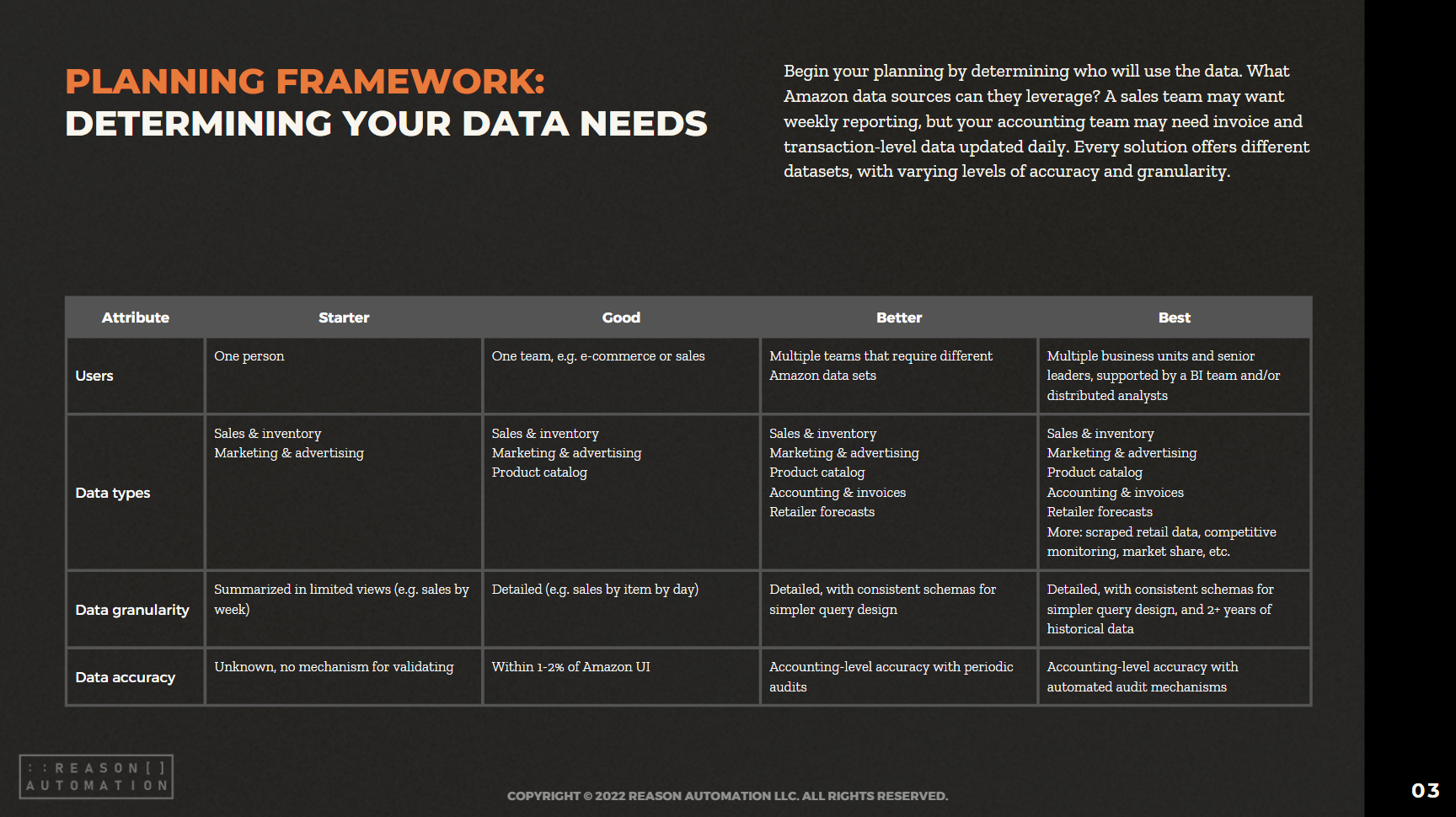What Is the Amazon Brand Analytics API?
A partial overview of the Selling Partner Reports API’s contents
Many ecommerce companies who serve as vendors for Amazon have trouble analyzing their business through Vendor Central’s reporting interfaces. While there are hundreds of options for connecting to Seller Central data, Vendor Central options were scarce. As recently as 2019, vendors were expected to pay Amazon an annual fee to access analytics and reporting about their business.
In 2022, Amazon has finally unlocked programmatic data for Vendors and expanded data access for Sellers through the Selling Partner Reports API. For the first time in Amazon’s history, vendors can access years of granular sales, traffic, inventory, and profitability information about their business—including Brand Analytics reports.
But first, we need to clarify some of Amazon’s terminology.
Brand Analytics vs. Retail Analytics
What is Amazon Brand Analytics? How is it different from Amazon Retail Analytics? The answer is confusing because Amazon keeps changing and rebranding their reporting systems and data interfaces.
As of Q3 2022, Retail Analytics is a reporting suite for Amazon vendors that includes sales, traffic, inventory, forecasting, profitability, and catalog reports. It became the default interface in Vendor Central globally on September 16. At the time of launch, many vendors are disappointed with the loss of data vs. the previously Sales Diagnostic and Operations reporting options, despite Amazon adding new functionality.
Brand Analytics is a customer behavior reporting suite for both vendors and sellers. It includes market basket analysis (what items are purchased most frequently with your items), repeat purchase analysis (percentage of orders per item that are the 2nd+ purchase by the same customer), and search term report (top product search terms and associated ASINs). You must be brand registered with Amazon to receive free access to Brand Analytics.
Both reporting suites are available programmatically through the Selling Partner API (SP-API).
What Is the Amazon Selling Partner API (SP-API)?
The SP-API is a large collection of APIs that let vendors, sellers, agencies, and other selling partners access data programmatically. They let developers and service providers create powerful applications on behalf of vendors and sellers. To access the SP-API, you must either:
Be registered as a developer with Amazon and request approval to subsets of the API on an as-needed basis, or
Use an application or service like Reason Automation that can connect to the SP-API for you.
Many brands have difficulty understanding what’s available from Amazon’s SP-API because of the sheer scope of information available, and Amazon’s frequent updates. Most brands will be interested in the Reports API, of which the most relevant sections are:
Vendor Retail Analytics: the same vendor sales and operations reports that are available in Vendor Central UI. Report options include Sales, Traffic, Inventory, Forecasting, and Net PPM.
Brand Analytics: the same customer behavior data available to registered brands in Vendor and Seller Central UI. Report options include Market Basket Analysis, Repeat Purchase Analysis, and Search Terms.
Seller Retail Analytics: the same Sales & Traffic date range reports available in Seller Central UI.
Seller Inventory: a wide variety of Seller-focused inventory listing and operational reports. Report options include Inventory, All/Active/Inactive/Open/Canceled/Suppressed Listings, ASIN Eligibility, and FBA Fee Previews.
See Amazon’s developer documentation for a complete list of reports available through the Reports API.
What Is the Amazon Brand Analytics API?
While Amazon does not have a product formally known as the “Brand Analytics API,” most people are looking for an API that provides:
Retail analytics information like sales, traffic, and inventory
Customer behavior information like repeat purchases, market basket, and top search terms
All of the above
The Selling Partner API finally contains all of the above, and is the de-facto “Brand Analytics API” that most brands are looking for, though it may not yet have all the data and functionality you want.
What was the Marketplace web services (MWS) API?
The Marketplace Web Services (MWS) API is Amazon’s legacy API service for third-party sellers. For years Sellers have had robust, programmatic access to their sales, inventory, and other business data while Vendors were stuck with Amazon’s default interfaces.
In 2020 Amazon developed the new Selling Partner API (SP-API) as a replacement for the old MWS API. Amazon promised that this API would have expanded capabilities, including access to Brand Analytics and Amazon Retail Analytics data for Vendors.
Now the MWS API is scheduled for deprecation in December 2023. Read more on Amazon’s developer website.
How can I access my Retail Analytics and Brand Analytics API data?
Brands that recognize the power of Amazon data want easy, programmatic access to it. They want their BI teams to incorporate Amazon data into strategic planning for other channels. They want Amazon and e-commerce sales teams to have direct access to enriched Amazon data, whether via dashboards or SQL databases.
But to access the SP-API, you must either:
Be registered as a developer with Amazon and request approval to subsets of the API on an as-needed basis, or
Use an application or service like Reason Automation that can connect to the SP-API for you.
The registration & development process takes a lot of time and effort. If you rely on Amazon data but are tired of procuring it manually, we’re here to help!


